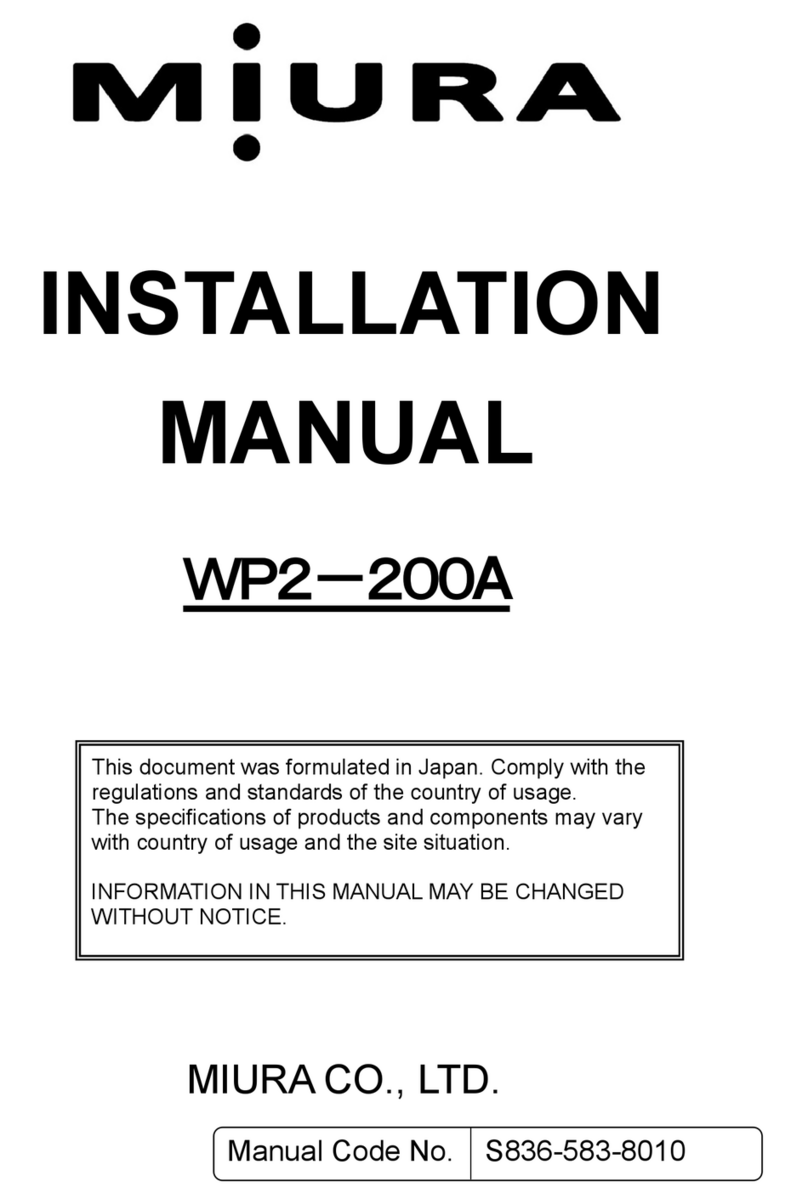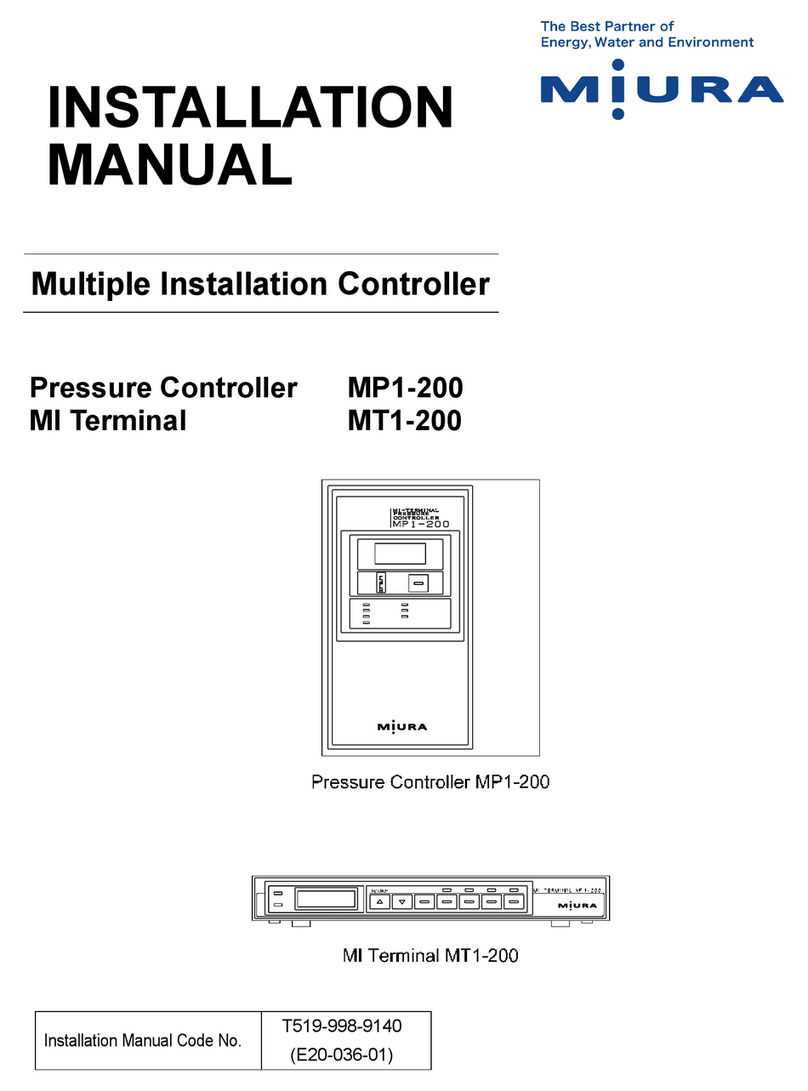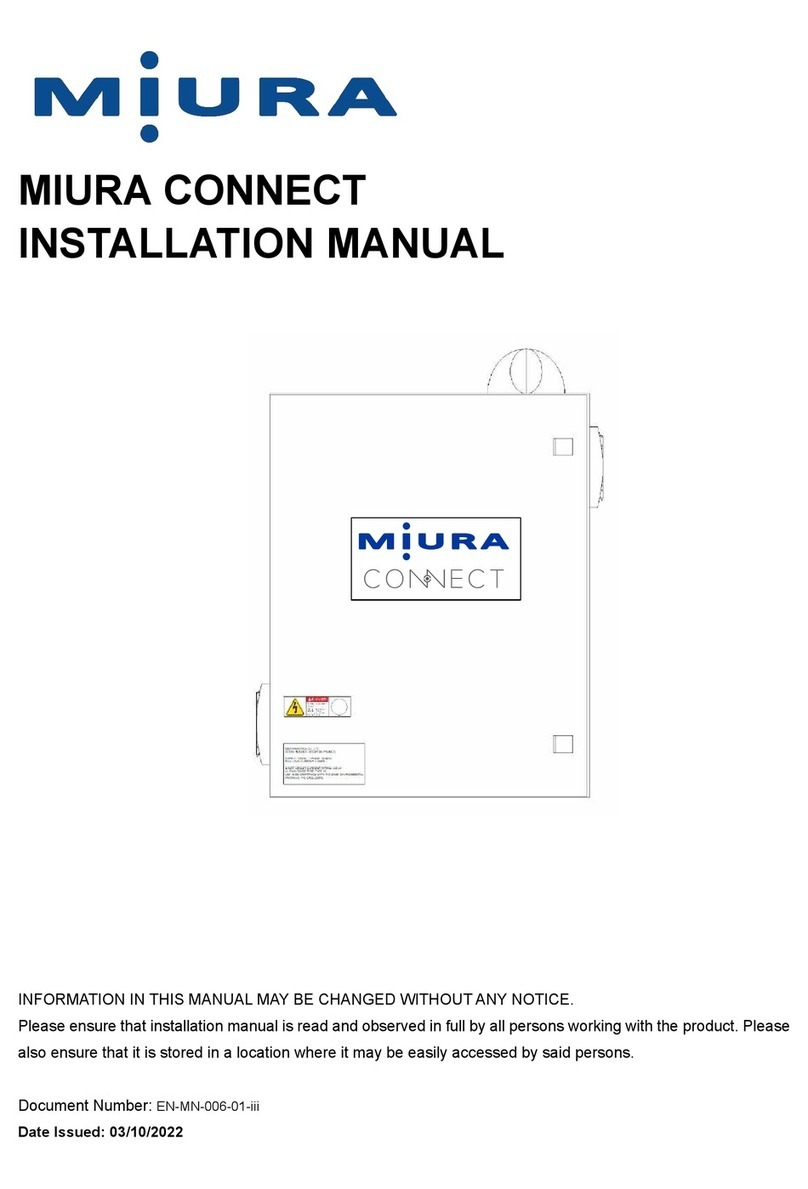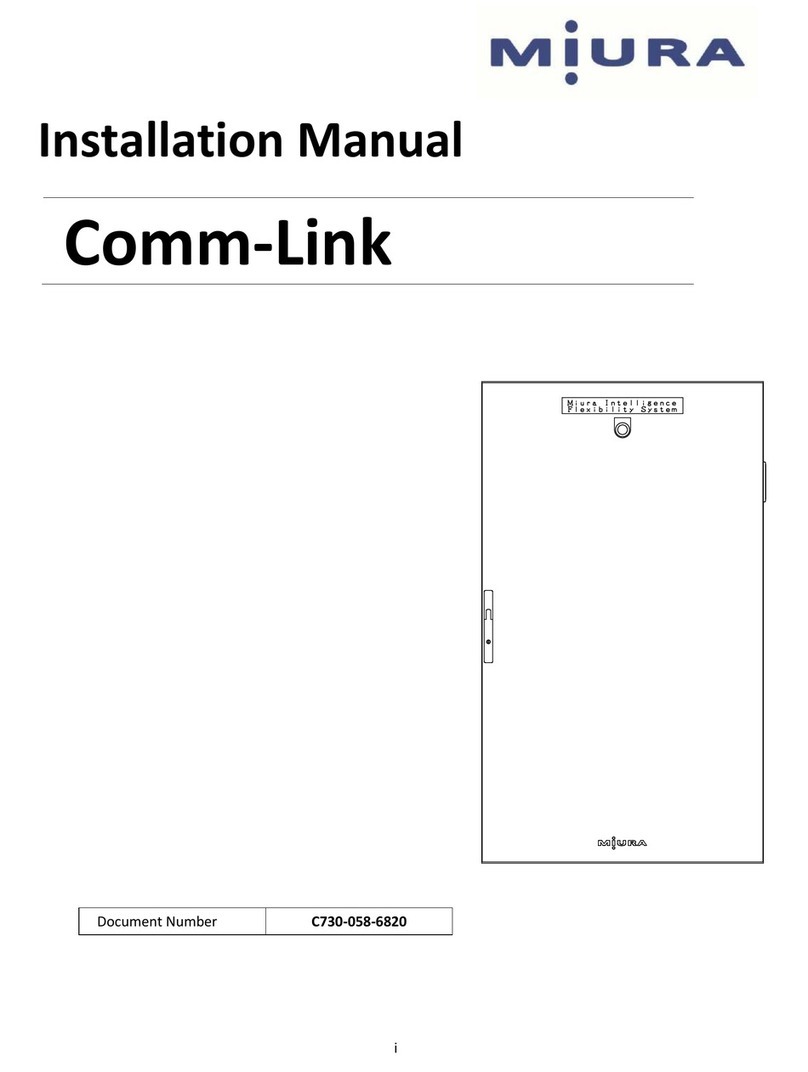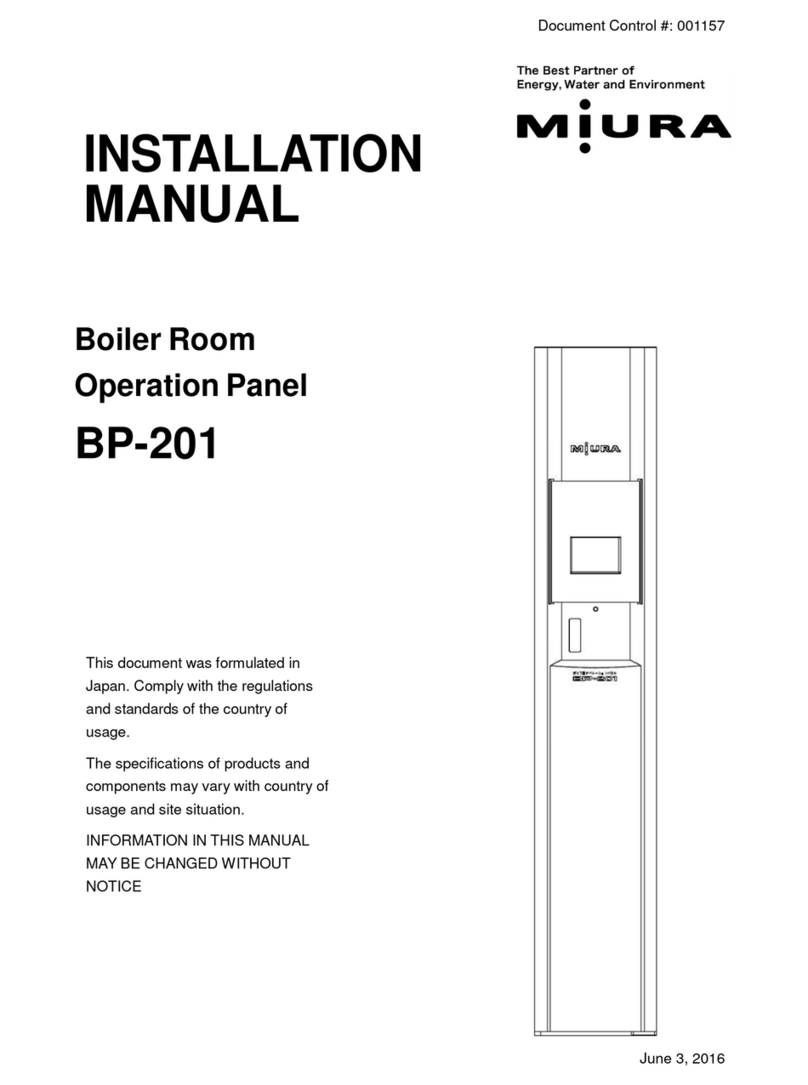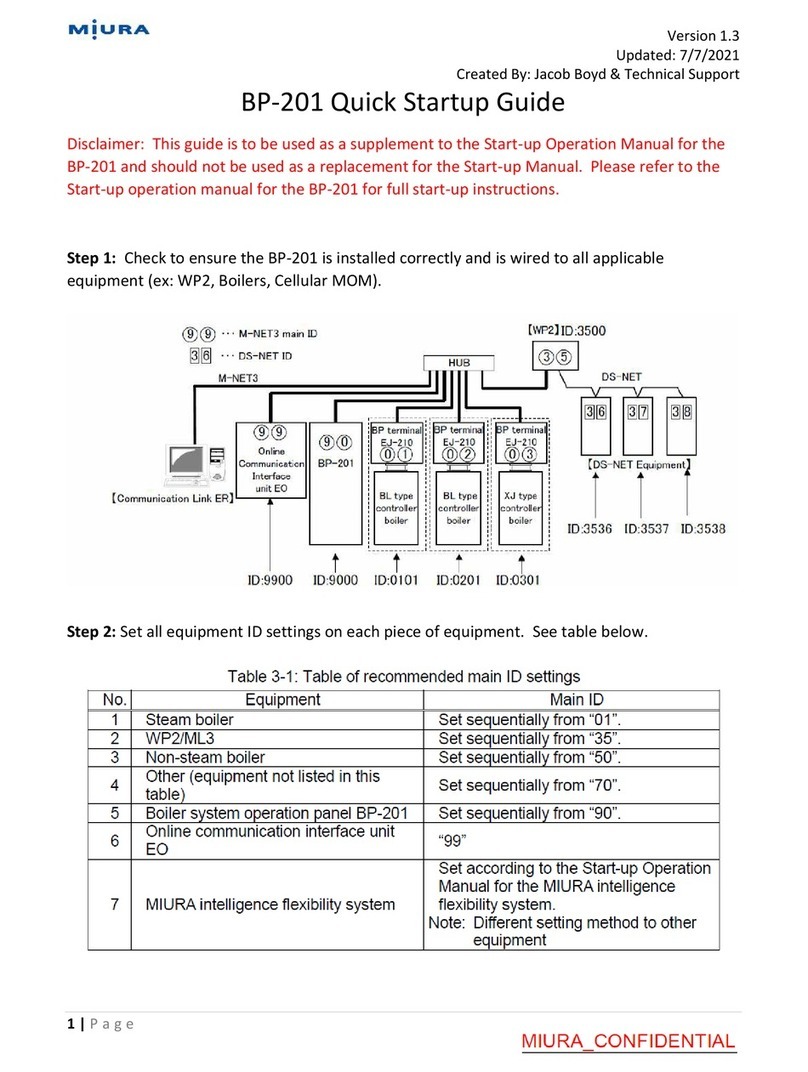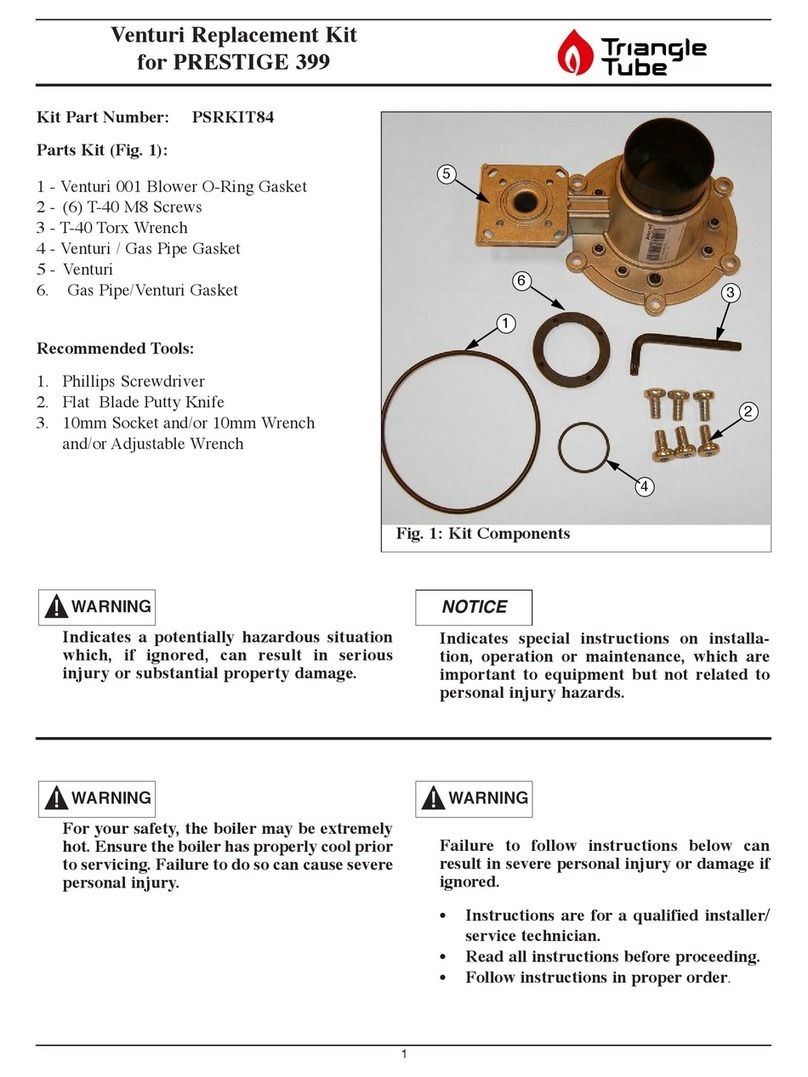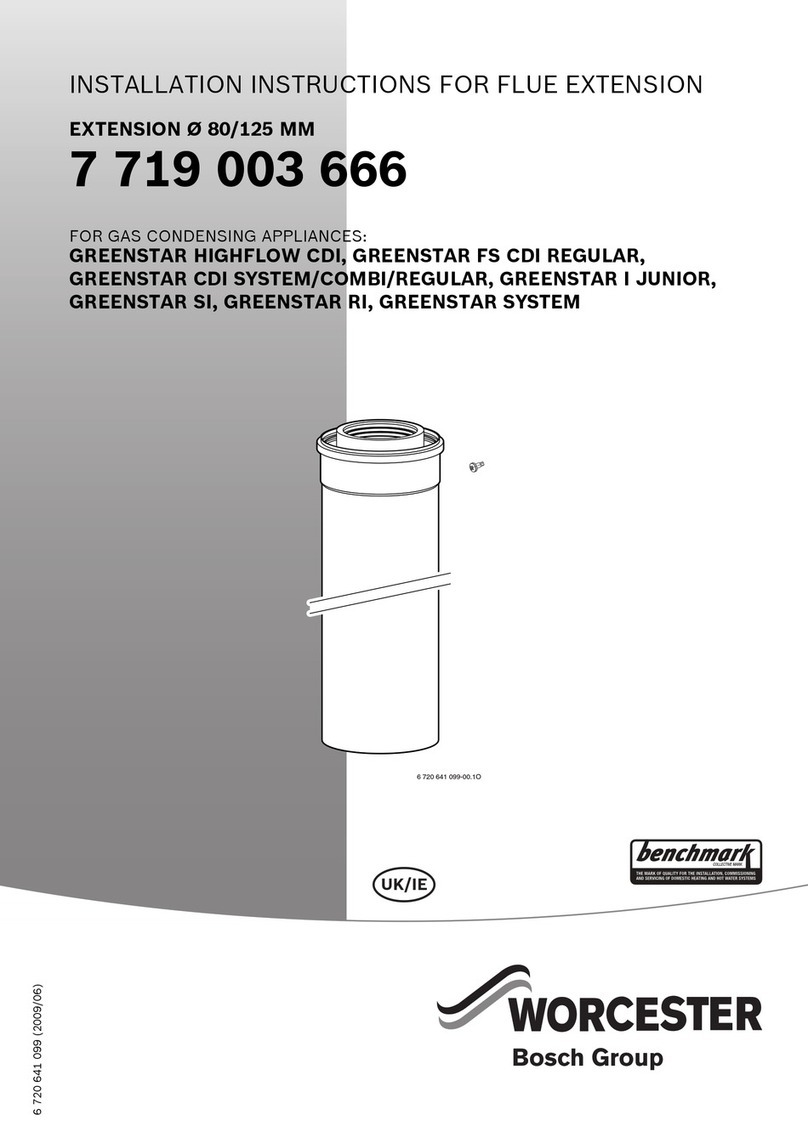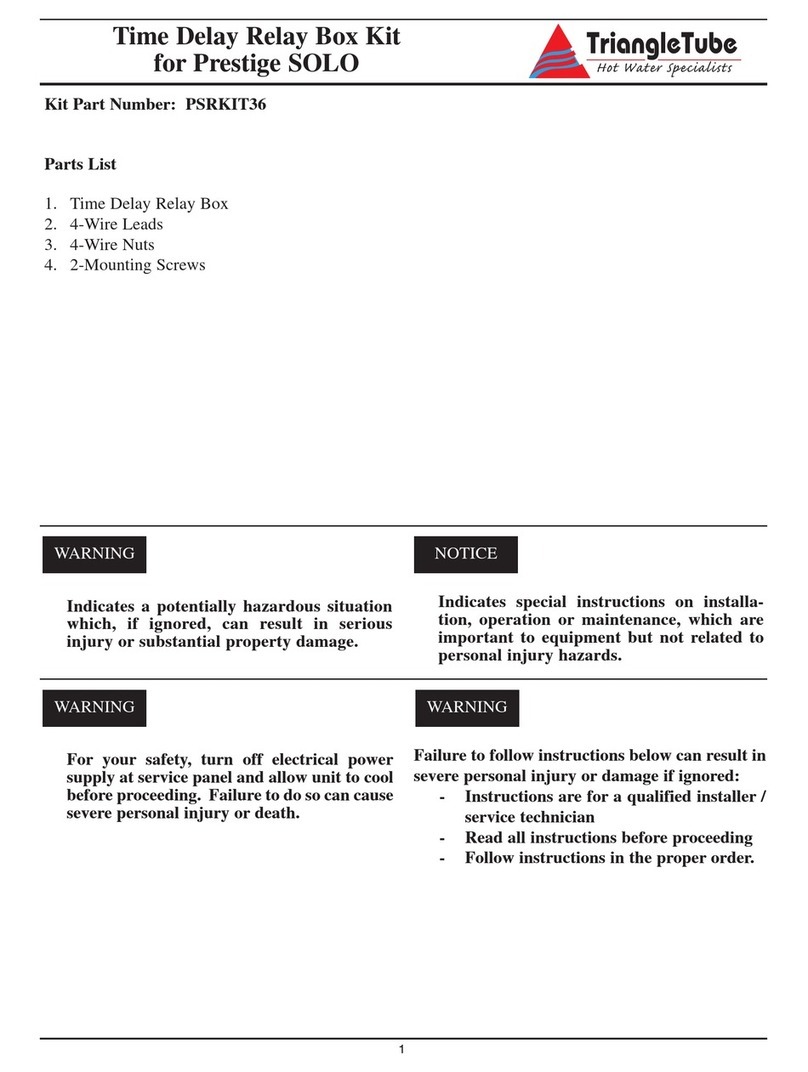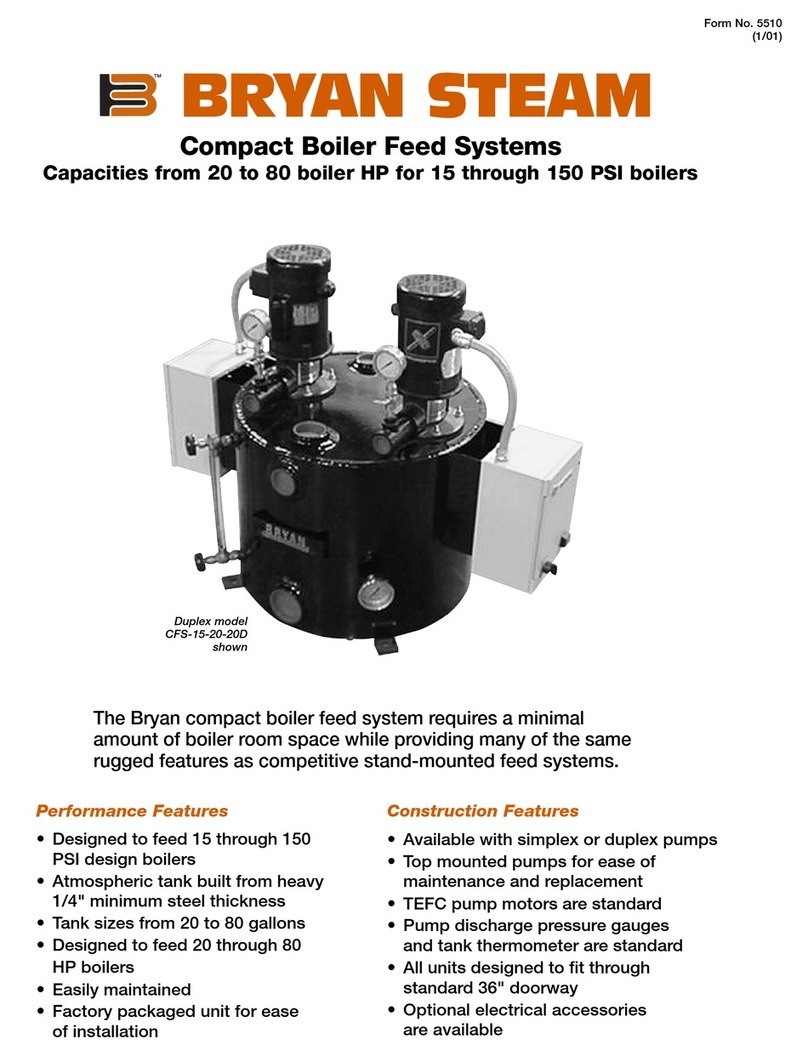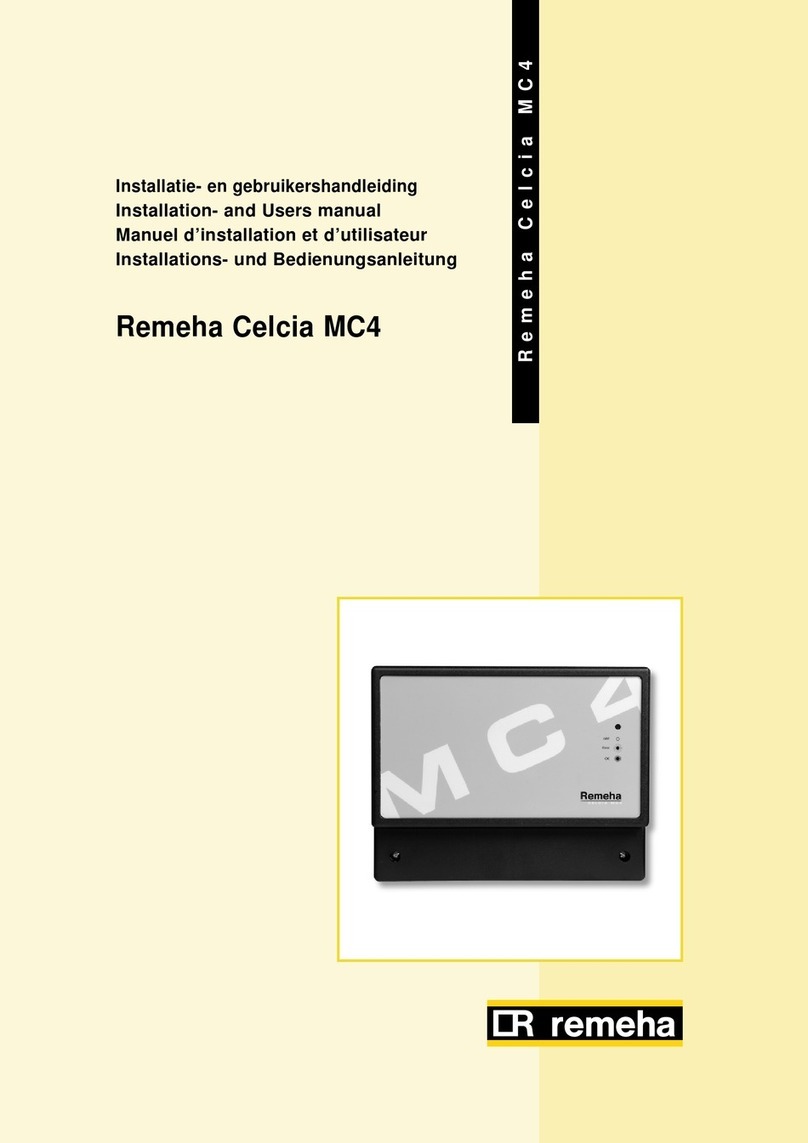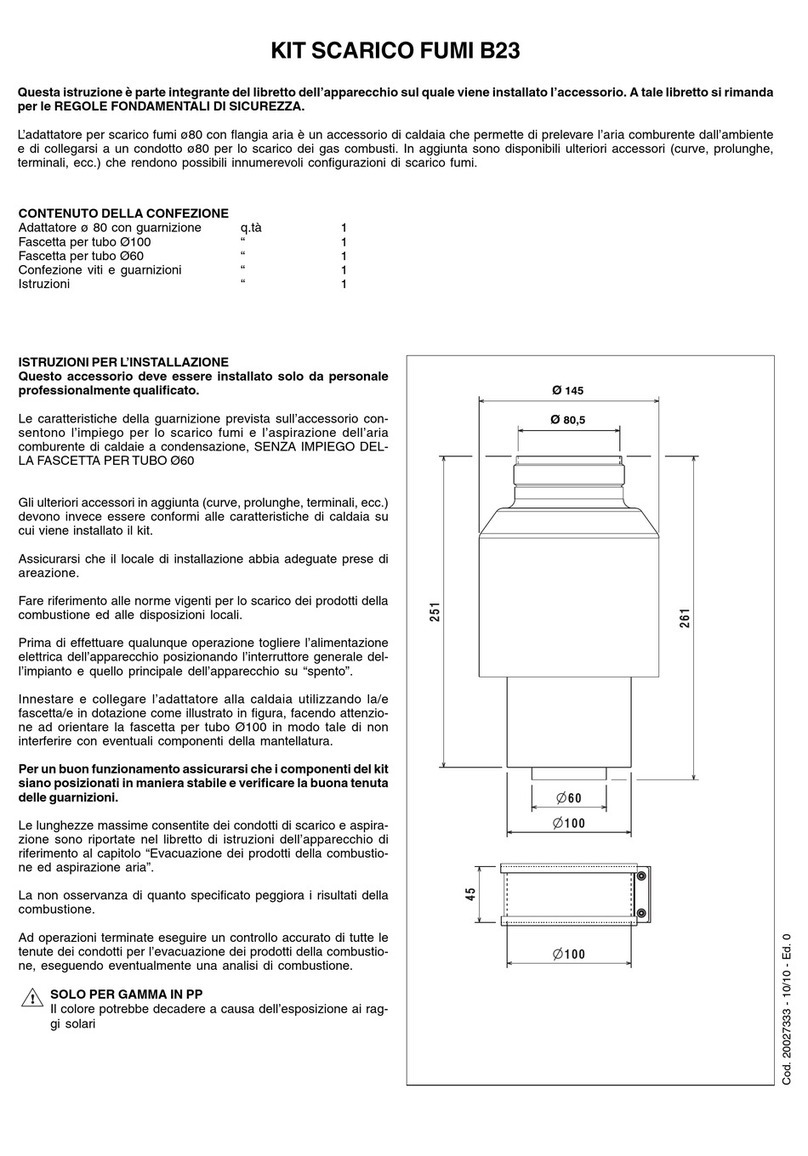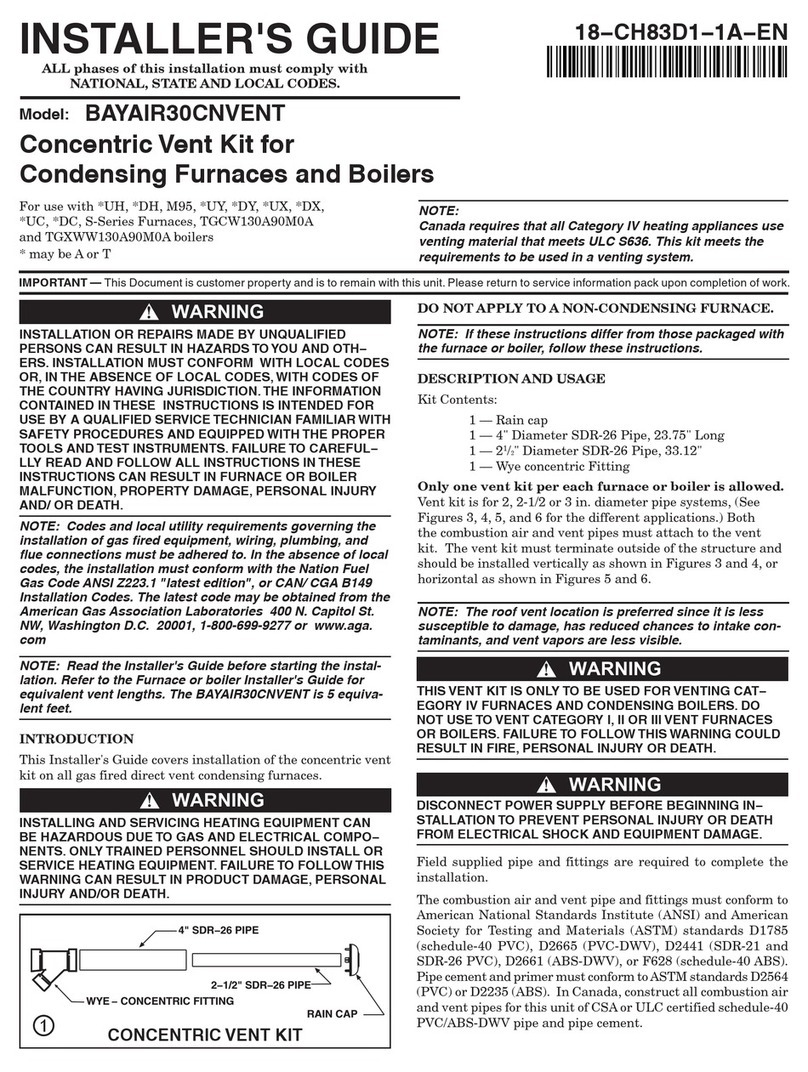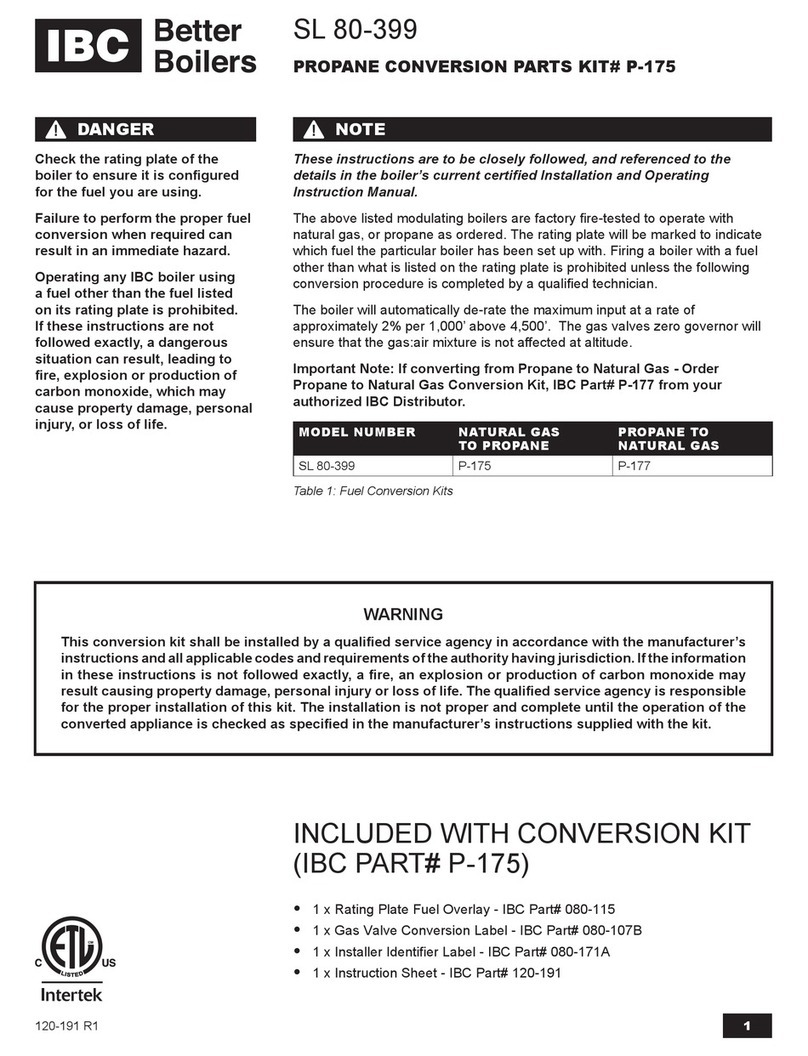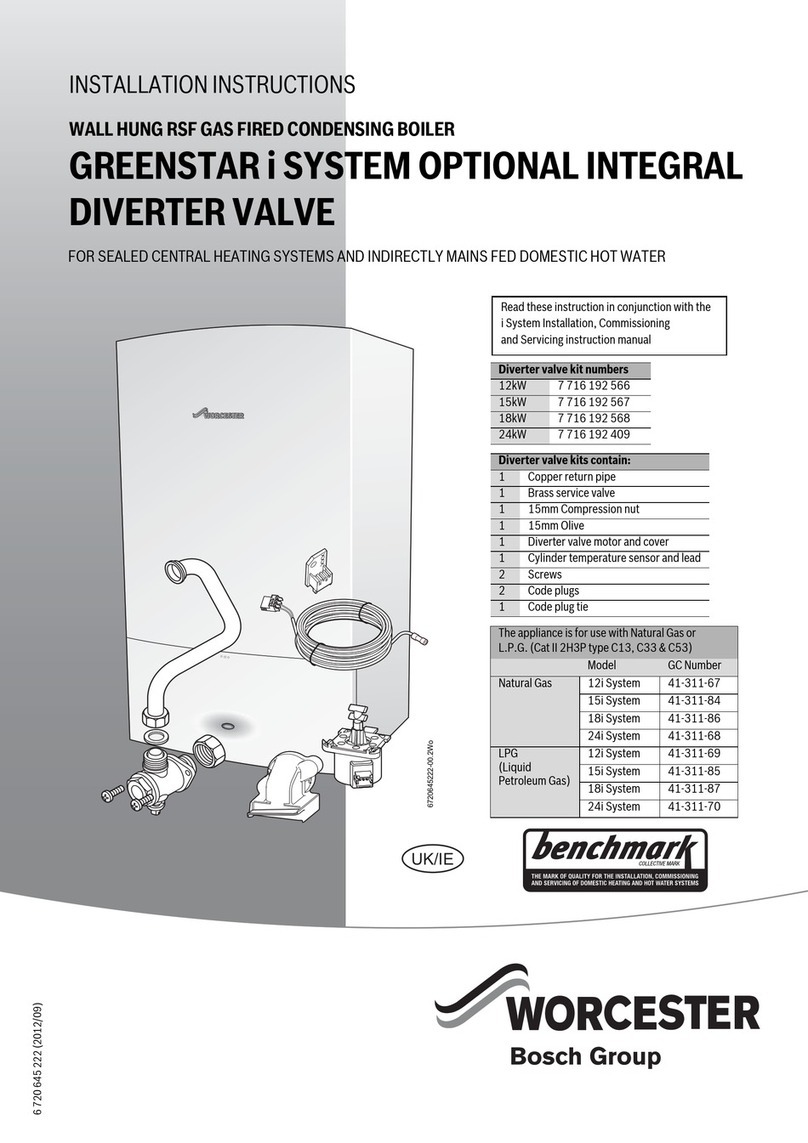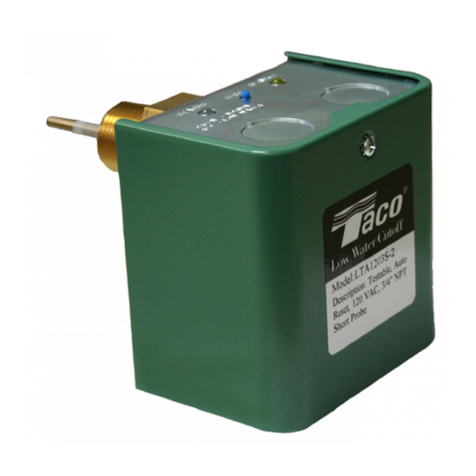
Applicable to All Water Treatment Equipment (Related Laws and Regulations)
Document No.: 98-002-04-01
<Precautions for equipment installation and use> — Related laws and regulations
1) The table below shows part of the laws and regulations on the installation and use of water treatment equipment.
Refer to the separate document for more information on other relevant laws and regulations.
(There are also prefectural and municipal ordinances; therefore, contact the supervisory authority or competent
authority for more information.)
2) The information listed in the table was created based on the laws and regulations in effect when the information was
published.
3) The documents to be submitted and their destination vary depending on your equipment and facilities.
If you have any questions, contact your nearest dealer, MIURA sales office, or the competent supervisory authority.
4) The laws and regulations listed below may not apply to all water treatment equipment. Refer only to those laws and
regulations that apply to your equipment and facilities.
Related laws
and regulations
Water Quality
Pollution Control
Act, River Act,
Sewerage Service
Act, etc.
Verification required from local towns and cities in which
the water treatment equipment or other equipment is
installed.
(The laws and regulations in some areas may be defined
even more specifically in accordance with regional
regulations.)
Drain water may be produced depending on the type
of water treatment equipment and equipment
operation. Drain water must be treated in other ways
to prevent it from damaging waterways and the like.
In cases where the total amount of drain water
exceeds the legal amount on a per-plant basis or
where the equipment is used at specified facilities,
an application is necessary. However, the conditions
may vary from region to region. Accordingly, you
should contact your local authorities for more
information.
Regional Pollution
Prevention
Ordinance
Notification as
required by the
applicable ordinance
As set forth by
the relevant
regional
authorities
As set forth by
the relevant
regional
authorities
Applicability is defined independently by regional
pollution prevention ordinances based; accordingly,
you should contact your local authorities for more
information. (Certain regional ordinances concerning
air pollution, noise, vibration, drain water, and the
like may supersede the corresponding national
regulations.)
(Prohibition of direct waterworks contact)
Water treatment equipment (excluding certified
equipment) cannot be connected directly to
waterworks. Instead, it is necessary to either set up
a feed water tank or to isolate the systems using, for
example, a float valve.
Details may vary from region to region; accordingly,
you should contact your local authorities for more
information.
Design specifications
for dedicated
waterworks,
Notification of the
start of feeding water
As set forth by
the relevant
regional
authorities
Business operators are to submit notification to local
governments for drinking water wells for industrial
use in facilities where the volume of water intake
exceeds the allowed quantity as prescribed by law
which require the use of dedicated waterworks
systems regardless of the form of usage. Contact
your local authorities for details.
Act on
Maintenance of
Sanitation in
Buildings
Buildings are to be preserved and maintained
(through cleaning, water quality analysis, and other
activities) in accordance with Hygiene Control
Standards.
No notification made
for equipment and
related matters
Measures are to be implemented to maintain
hygiene and safety and prevent sanitation hazards in
accordance with applicable laws.
Industrial Safety
and Health Act
When using substances specified in applicable laws
(such as specified chemical substances), a qualified
operator must be selected, all such substances are
to be handled and managed in accordance with
applicable laws, and the operator’s healthcare is
necessary.
Poisonous and
Deleterious
Substances
Control Act
All such substances are to be stored and managed
in accordance with applicable laws. Chemical
substances are to be handled properly in
accordance with the guidance and information listed
on the SDS for the relevant material.
Notification as set
forth by local fire
departments
The nearest fire
department
Prior to the
start of work
Local fire chiefs or fire department chiefs must be
notified in advance of any plans for any party to use
or store certain substances (chemical substances
and other materials) of a designated quantity as
specified by applicable laws and regulations.

